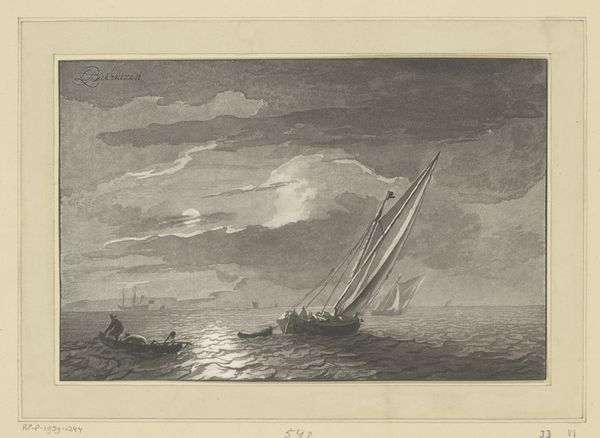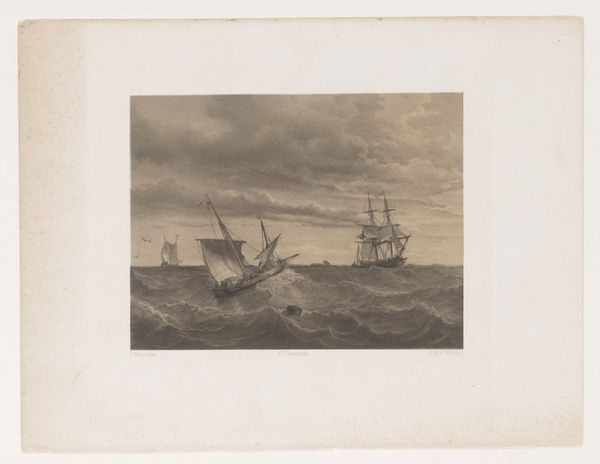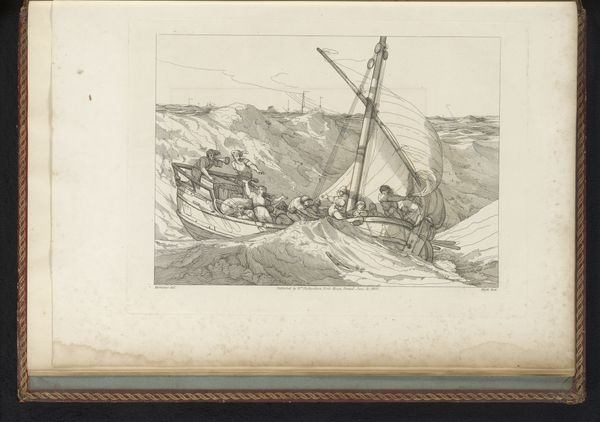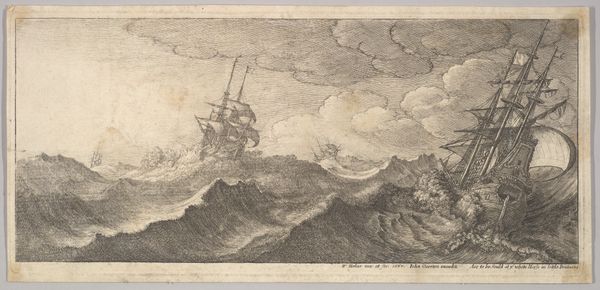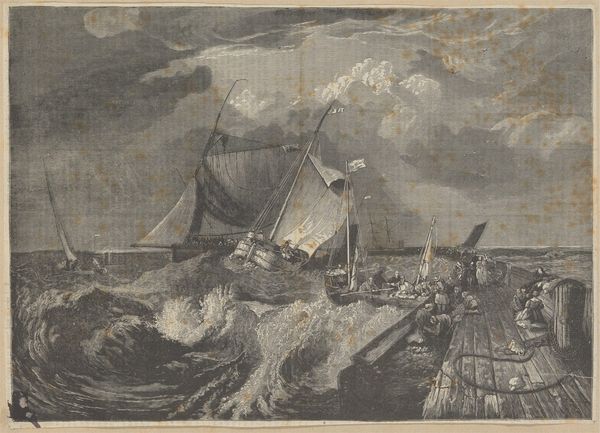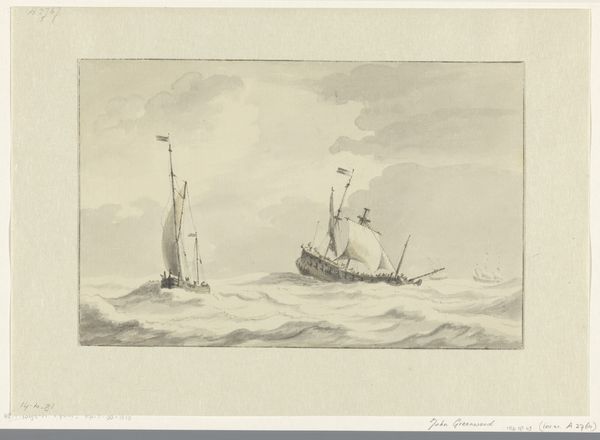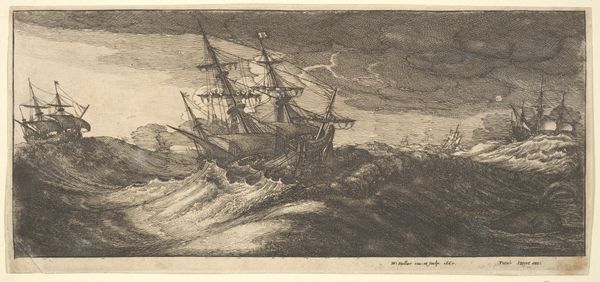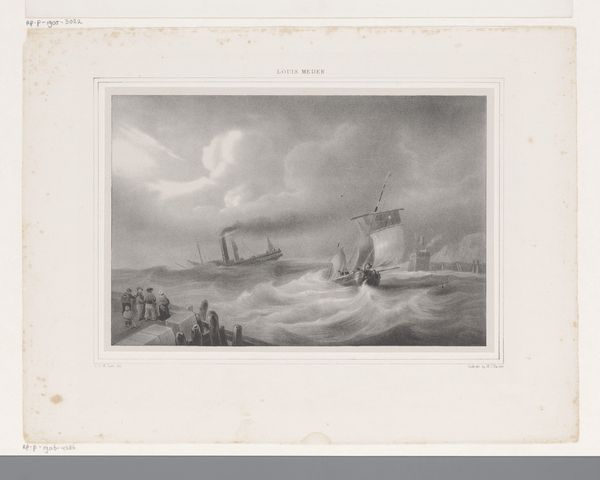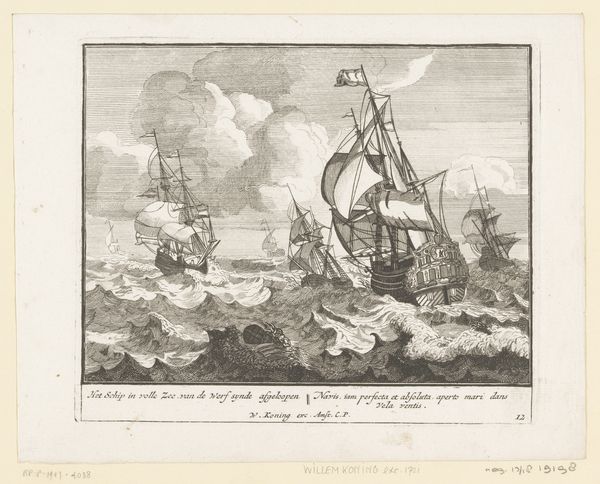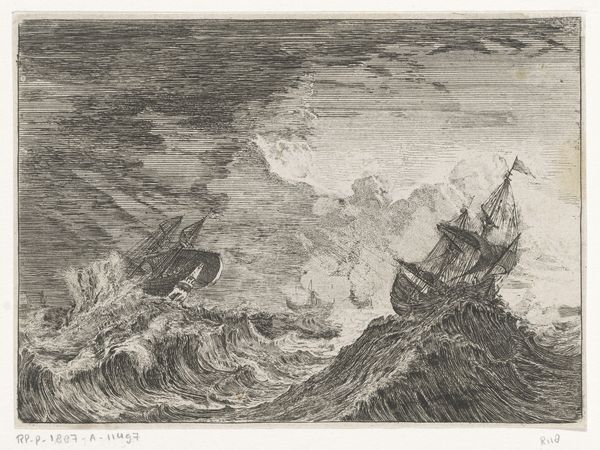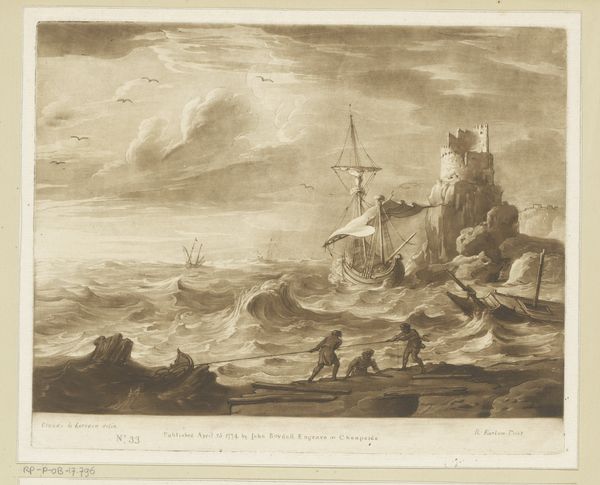
Dimensions: height 207 mm, width 256 mm
Copyright: Rijks Museum: Open Domain
Editor: So this is "Storm op zee met figuren die van een schip vluchten," or "Storm at Sea with Figures Fleeing a Ship," potentially from 1774, an engraving by Richard Earlom. It's so dramatic, the ships look completely at the mercy of the storm. What do you see in this piece? Curator: This print offers a window into the Romantic era's fascination with the power of nature, specifically the sea, as a metaphor for human vulnerability. But what societal anxieties do you think such depictions reflect? Consider the 18th century – a time of burgeoning colonial expansion via naval power, and also increased maritime disasters. Editor: I guess the prevalence of shipwrecks might speak to fears surrounding the costs of expansion? That there were lives being lost amidst all this progress? Curator: Exactly. The individuals fleeing the ship are reduced to anonymous figures against the vastness of the ocean. This anonymity allows viewers to project their own fears onto the scene, engaging with broader questions about power structures, both natural and man-made, and our individual insignificance in their face. This also comes on the heels of Enlightenment philosophies focusing on the individual - and challenging power. How might this image reflect that change? Editor: So, instead of a glorious, triumphant depiction of naval power, we get something that undermines it and humanizes the experience of those who might suffer for it? Curator: Precisely. And it subtly challenges any notions of inherent power. We see this theme represented later across other works like Théodore Géricault's "The Raft of the Medusa". Editor: It's unsettling to consider how such historical factors are at play, and to recontextualize the artwork with new frameworks. I am now seeing the image not as simple Romantic scenery but as a symbol of that particular intersection between power, fear, and nature. Curator: Indeed, situating art within these broader sociopolitical narratives really deepens our understanding and encourages richer dialogues about representation and its impact.
Comments
No comments
Be the first to comment and join the conversation on the ultimate creative platform.

